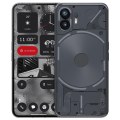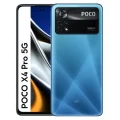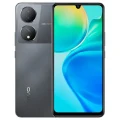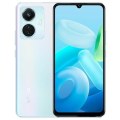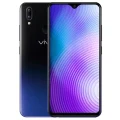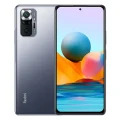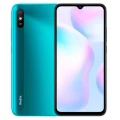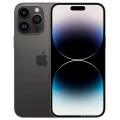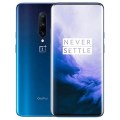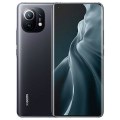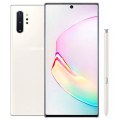- Awesome page
- Latest Mobile
- Smartphones
- Nothing Phone (2a)
Nothing Phone (2a)
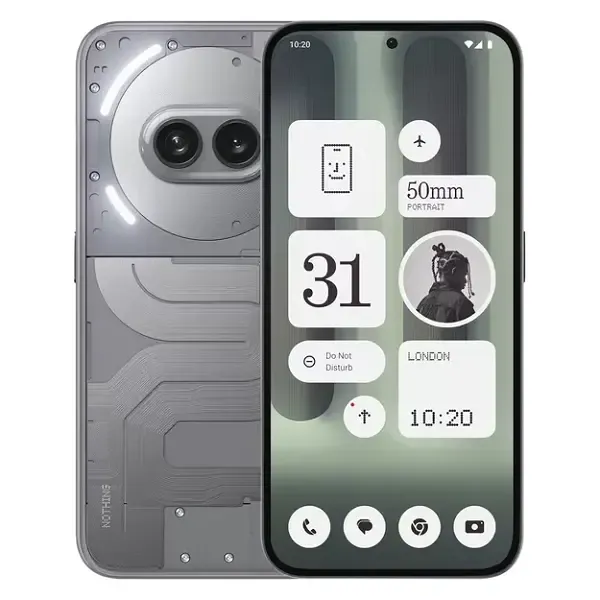


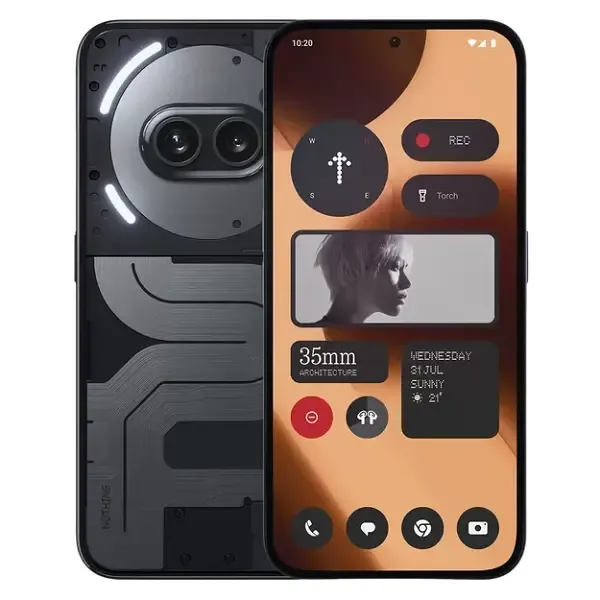
Nothing Phone (2a) Price in Bangladesh
The Nothing Phone (2a) price in Bangladesh is 36,000 Taka. It comes in two variants: 128GB/8GB RAM and 256GB/12GB RAM. The device features a 5000mAh battery with 45W fast charging, powered by the MediaTek Dimensity 7200 chipset (4 nm), and runs on Android 14.
Specifications
General
| Model | Nothing Phone (2a) |
| Announced | 05-03-2024 |
| Released | 12-03-2024 |
| Status | Available |
| Official price | 36000 |
| Unofficial price | 8GB 128GB ৳36,000 / 8GB 256GB ৳39,000 / 12GB 256GB ৳43,000 |
| Global price | €330 |
Design
| Dimensions | 161.7 x 76.3 x 8.6 mm (6.37 x 3.00 x 0.34 in) |
| Weight | 190 g (6.70 oz) |
| Colors |
Black, White, Milk |
Network
| Technology | GSM / HSPA / LTE / 5G |
| 2G Network |
GSM 850 / 900 / 1800 / 1900 - SIM 1 & SIM 2 |
| 3G Network |
HSDPA 800 / 850 / 900 / 1700(AWS) / 1800 / 1900 / 2100 |
| 4G Network |
LTE |
| 5G Network |
SA/NSA |
| GPRS <strong>GPRS</strong> (General Packet Radio Service) is a packet oriented mobile data service on the 2G and 3G cellular communication system's global system for mobile communications (GSM), Generally, GPRS is used for the purpose of wireless data transfer, such as sharing pictures and videos or browsing the Internet via a mobile phone connection. | |
| EDGE <strong>EDGE</strong> (Enhanced Data GSM Environment) is a wireless network technology generally considered the next step in the 2G network offers data transfer rates up to four times faster than ordinary GSM networks, Generally, EDGE is used for the purpose of wireless data transfer, such as sharing pictures and videos or browsing the Internet via a mobile phone connection. | |
| Speed | HSPA 42.2/5.76 Mbps, LTE-A, 5G |
Display
| Display Type <strong>Display Technology => </strong> A number of display technologies and types used in mobile phones => TFT (Thin Film Transistor), IPS (In-Place Switching), OLED (Organic Light Emitting Diode), AMOLED (Active-Matrix Organic Light-Emitting Diode), Super AMOLED (an even advanced version of AMOLED), Resistive Touchscreen (Resistive touchscreens contain two layer of conductive material with a very small gap between them which acts as a resistance), Capacitive Touchsceen (Capacitive touchscreen technology consists of a layer of glass coated with a transparent conductor) | AMOLED, 1B colors, 120Hz, HDR10+, 700 nits (typ), 1100 nits (HBM), 1300 nits (peak) |
| Size | 6.7 inches, 108.0 cm2 (~87.6% screen-to-body ratio) |
| Resolution | 1080 x 2412 pixels, 20:9 ratio (~394 ppi density) |
| Features |
Always On Display |
Camera
Main camera
| Camera Setup | Dual |
| Primary <strong>Camera</strong> is able to capture photographs and usually videos, The most important characteristics of a camera are the resolution (measured in megapixels), lens focus type (fixed or automatic), higher megapixel cameras are known to capture higher quality photos, but not always a good measurement of the photos quality. |
50 MP, f/1.9, (wide), 1/1.56&quot;, PDAF, OIS 50 MP, f/2.2, 114˚ (ultrawide), 1/2.76&quot;, 0.64µm |
| Features |
LED flash, panorama, HDR |
| Video | 4K@30fps, 1080p@60/120fps, gyro-EIS |
Selfie camera
| Camera Setup | Single |
| Primary <strong>Camera</strong> is able to capture photographs and usually videos, The most important characteristics of a camera are the resolution (measured in megapixels), lens focus type (fixed or automatic), higher megapixel cameras are known to capture higher quality photos, but not always a good measurement of the photos quality. |
32 MP, f/2.2, (wide), 1/2.74&quot; |
| Features |
HDR |
| Video | 1080p@30fps |
Hardware
| Chipset <strong>Chipset</strong> is a group of integrated circuits designed to perform one or a more dedicated functions, often with real time computing constraints, Popular smartphones are equipped with more advanced embedded chipsets that can do many different tasks depending on their programming. | Mediatek Dimensity 7200 (4 nm) |
| CPU <strong>CPU</strong> (Central Processing Unit) mostly known as processors, CPU processes instructions in order to carry out certain functions that make your device operate properly. Processors are often described as the brain of computers, smartphones and tablets, Smartphones and tablets rely on processors to carry out their every task, Processors are an incredibly important factor in selecting any type of computing device, including your smartphone. | Octa-core (2x2.8 GHz Cortex-A715 & 6x Cortex-A510) |
| GPU <strong>GPU</strong> (Graphics Processing Unit) is a single-chip processor designed to rapidly manipulate and alter memory to accelerate the creation of images in a frame buffer intended for output to a display, This includes things such as lighting effects, object transformations, and 3D motion. | Mali-G610 MC4 |
| RAM (Memory) <strong>RAM</strong> (Random Access Memory) is a type of computer memory that can be accessed randomly, any byte of memory can be accessed without touching the preceding bytes that allows information to be stored and accessed quickly from random locations. RAM is the most common type of memory found in computer systems, smartphones, tablets and other electronic devices. | 8/12 GB |
| Internal Storage <strong>Internal Storage</strong> is a data storage space (flash memory) mostly used in smartphones, tablets and other electronic devices where operating system, apps, music, photos, videos, files and other user data Is stored. | 128/256 GB |
| Sensors <strong>Sensors</strong> are electronic components that detects and responds to some type of input from the physical environment. The specific input could be light, heat, motion, moisture, pressure and location, The output is generally a signal that is converted to use in computing systems, a location sensor, such as a GPS receiver is able to detect current location of your electronic device. |
Fingerprint (under display, optical), accelerometer, proximity, compass |
Connectivity
| Bluetooth <strong>Bluetooth</strong> is a wireless communications technology for exchanging data between mobile phones, headsets, computers and other network devices over short distances without wires, Bluetooth technology was primarily designed to support simple wireless networking of personal consumer devices. | 5.3, A2DP, LE |
| Infrared <strong>Infrared</strong> connectivity is an old wireless technology used to connect two electronic devices. It uses a beam of infrared light to transmit information and so requires direct line of sight and operates only at close range. | |
| USB | USB Type-C 2.0, OTG |
| GPS <strong>GPS</strong> The Global Positioning System is a satellite-based radio navigation system, GPS permits users to determine their position, velocity and the time 24 hours a day, in all weather, anywhere in the world, In order to locate your position, your device or GPS receiver must have a clear view of the sky. | GPS, GALILEO, GLONASS, BDS, QZSS |
| NFC <strong>NFC</strong> (Near field communication) is a set of standards for smartphones and similar devices to establish peer-to-peer radio communications with each other by touching them together or bringing them into proximity, usually no more than a few inches. |
Battery
| Battery Type <strong>Battery Type => </strong> Cell phones run on various kinds of batteries depending on the manufacturer, phone size or shape and features. There are basically four types of cell phone batteries => Lithium Polymer, Lithium Ion, Nickel Metal Hydride and Nickel Cadmium. | Non-Removable Li-Po |
| Capacity <strong>Battery Capacity</strong> is a measure (typically in Amp-hr) of the charge stored by the battery, and is determined by the mass of active material contained in the battery. The battery capacity represents the maximum amount of energy that can be extracted from the battery under certain conditions. | 5000 mAh |
| Charging Charging | 45W wired, 50% in 23 min, 100% in 1 hour (advertised) |
Nothing Phone (2a) Review: A Bold Step in Design and Performance
The smartphone industry has become overwhelmed with similar-looking devices and incremental upgrades. Enter the Nothing Phone (2a), a smartphone that dares to challenge the norm with innovative design, sustainable materials, and refined performance. A sequel to the original Nothing Phone, this device builds on the brand’s commitment to simplicity, transparency, and sustainability.
If you’re a tech enthusiast seeking a phone that stands out or a smartphone shopper looking for reliability, this review will guide you through the key features of the Nothing Phone (2a): its design, performance, camera, battery life, user experience, and value for money.
What Is the Nothing Phone?
Nothing, founded by Carl Pei (co-founder of OnePlus), has quickly gained recognition for its minimalist approach to consumer electronics. The philosophy behind the brand is clear—strip away the unnecessary and focus purely on innovation, transparency, and sustainability. The Nothing Phone (2a) embodies this ethos with a design-first approach and eco-conscious construction to offer consumers something unique in the saturated smartphone market.
Design and Build Quality
The design of the Nothing Phone (2a) is where it truly separates itself from the rest. Building on the see-through aesthetics introduced with the first Nothing Phone, the (2a) continues to showcase its internal components through a transparent back panel. This industrial-inspired design isn’t just for show—it’s a representation of the brand’s commitment to transparency at every level.
- Materials: The device is constructed with durable materials, including a recycled aluminum frame and Gorilla Glass on the front and back. This reinforces Nothing’s goal of reducing its environmental footprint.
- Build Quality: Despite its striking design, Nothing ensures that the Phone (2a) feels premium in the hand. Subtle curves and a lightweight profile make it comfortable for everyday use.
Beyond its aesthetics, the careful alignment of functionality and form is evident. This phone isn’t just built to look good but also built to last—a refreshing approach in a world of planned obsolescence.
Performance and Features
A good phone is more than just its looks, and the Nothing Phone (2a) delivers when it comes to performance. Powering the device is the MediaTek Dimensity 7200 chipset, built on an efficient 4nm process. This ensures smooth multitasking, lag-free app performance, and excellent gaming capabilities.
- Configurations: The Nothing Phone (2a) offers two variants—128GB/8GB RAM and 256GB/12GB RAM—allowing users to choose their ideal storage and multitasking capabilities.
- Software: Running on Android 14 out of the box, the device benefits from an almost stock Android experience. The interface is clean and intuitive, free of bloatware, staying true to the brand’s minimalist philosophy.
- Unique Features: The device doesn’t just rely on hardware. Nothing introduces thoughtful software tweaks to enhance overall utility without complicating the user experience.
For everyday users and tech enthusiasts alike, the performance of the Nothing Phone (2a) strikes a balance between reliability and cutting-edge functionality.
Camera and Imaging Technology
Photo and video capabilities are critical in today’s smartphones. The Nothing Phone (2a) doesn’t disappoint, packing a well-rounded dual-camera setup that performs admirably for its price range.
- Main Camera: A 50MP main sensor ensures sharp and detailed images even in low light conditions. The color profiling is natural, though slightly under-saturated for those who prefer vivid tones.
- Secondary Camera: Packing a wide-angle lens, the secondary shooter is perfect for landscape photography and group shots, delivering solid edge-to-edge clarity.
- Selfie Camera: The front-facing 16MP sensor produces crisp and vibrant selfies, ideal for social media enthusiasts.
Image processing on the Phone (2a) is powered by advanced computational photography, boosting HDR performance and night mode capabilities. It may not rival flagship cameras like the iPhone 15 Pro or Samsung Galaxy S23 Ultra, but at its price point, it holds its own.
Battery Life and Charging
Battery performance is always a concern for smartphone users, and the Nothing Phone (2a) brings a healthy 5,000mAh battery to the table. This ensures a full day of usage for most users, even with heavy use. Casual users can easily stretch the battery life to a day and a half.
- Charging Speeds: With 45W fast charging, the phone powers up significantly faster than many of its competitors. Recharging from 0 to 100% takes around 45 minutes, giving users minimal downtime.
- Eco-Friendly Elements: Nothing takes a step toward sustainability by minimizing the carbon footprint of its charging hardware.
For users seeking reliability and long battery life without constantly being tethered to a charger, the Nothing Phone (2a) delivers in spades.
User Experience and Interface
The Nothing Phone (2a) takes a fresh approach to user experience. Despite its cutting-edge hardware, navigating the device feels effortless:
- Clean UI: Android 14 feels polished and intuitive here. Nothing avoids bogging down users with unnecessary apps or services, ensuring a clutter-free interface.
- Glyph Interface: The iconic Glyph LEDs on the back panel provide functional customization for notifications, calls, and charging feedback—bringing a unique utility to its design-forward philosophy.
For everyday use, the Nothing Phone (2a) caters to tech-savvy users with simplicity, offering an experience that is modern, functional, and exciting.
Price and Value
The final piece of the puzzle—value. The Nothing Phone (2a) is priced at 36,000 taka in Bangladesh, placing it firmly in the mid-range category. With its premium design, impressive performance, and thoughtful features, it offers tremendous value for its price.
When compared to typical mid-range options, the Nothing Phone (2a) stands out as a stylish alternative that combines hardware reliability and brand ethics with affordability.
Is the Nothing Phone (2a) Right for You?
The Nothing Phone (2a) is more than just a device—it’s a statement. For those caught between wanting a capable smartphone and prioritizing thoughtful design and sustainability, this phone is an excellent choice. Whether you’re a tech enthusiast seeking innovation, a smartphone shopper looking for value, or a sustainability advocate, the Phone (2a) ticks many boxes.
While it might not dethrone the ultra-premium flagship devices, it carves its own identity in the revered mid-range space. With enhancements in design, performance, and eco-conscious build quality, the Nothing Phone (2a) redefines what users can expect from a $300 smartphone.
